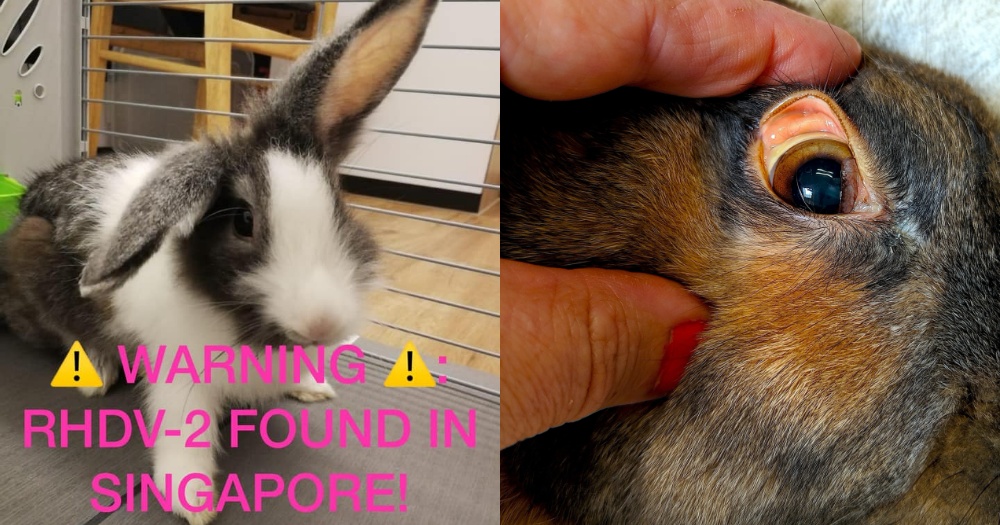A highly infectious and contagious animal disease that wasn't known to be present in Singapore has been reported in local rabbits.
The Animal & Veterinary Service (AVS) of the National Parks Board (NParks) has confirmed the first detection of Rabbit Haemorrhagic Disease (RHD) in local pet rabbits on Sep. 16.
The virus that causes Rabbit Haemorrhagic Disease was detected in samples from pet rabbits submitted by a veterinary clinic, said AVS:
"Based on investigations so far, there may be up to 11 affected rabbits in the cluster and eight have died. None of the cases are known to have a travel history. Epidemiological investigations are ongoing."
The agency has advised stakeholders to put in place "strict biosecurity protocols to minimise risk of disease transmission between rabbits from different households".
This includes setting up sanitation, disinfection, and isolation areas and to report suspect cases to AVS.
Typically, rabbits that are housed indoors and have minimal exposure to rabbits from other households face low risk of contacting Rabbit Haemorrhagic Disease.
Virus strain emerged in 2010 in Europe
According to veterinary clinic The Animal Doctors, the particular strain of Rabbit Haemorrhagic Disease Virus detected in the local cases is caused by the virus RHDV2.
RHDV2 emerged around 2010 in Europe and caused outbreaks in animals that had immunity to an earlier strain (RHDV).
RHDV2 is currently widespread in the U.K., U.S., and Australia.
Highly infectious
Rabbit Haemorrhagic Disease is highly infectious.
Rabbits can be infected with the virus through inhalation, ingestion, or by absorption through scrapes and wounds.
The virus replicates in the affected rabbit's liver, causing cell death and liver failure.
This in turn leads to multiple blood clots forming throughout its bloodstream (known as disseminated intravascular coagulation).
The increased clotting depletes the rabbit's supply of platelets, leading to excessive bleeding especially in its lungs, heart, and kidneys.
Symptoms of the disease include fever, loss of appetite, lethargy, muscle spasms, breathing difficulties, blue lips, or bleeding from the mouth and nose.
The symptoms typically appear one to five days after a rabbit exposed to the virus.
Highly contagious with 100 per cent mortality in some populations
The disease is also highly contagious. It can be transmitted by direct contact with an infected rabbit, its carcass, or any item, equipment, or even person who had contact with another infected rabbit.
Surviving rabbits can continue to shed the virus for at least a month after they recover. On the bright side, the disease is not zoonotic and does not affect humans, or other animal species.
The Animal Doctors added that Rabbit Haemorrhagic Disease has a mortality rate of nearly 100 per cent in some populations:
"The disease process can also be very rapid, with some rabbits appearing perfectly normal the night before and owners discovering a dead body the next morning."
There is no treatment for Rabbit Haemorrhagic Disease but vaccines that can provide immunity against RHDV2 are available.
AVS will be working with veterinary clinics and distributors on importing and registering vaccines for Rabbit Haemorrhagic Disease.
Top images via The Animal Clinic and Wikipedia
If you like what you read, follow us on Facebook, Instagram, Twitter and Telegram to get the latest updates.
